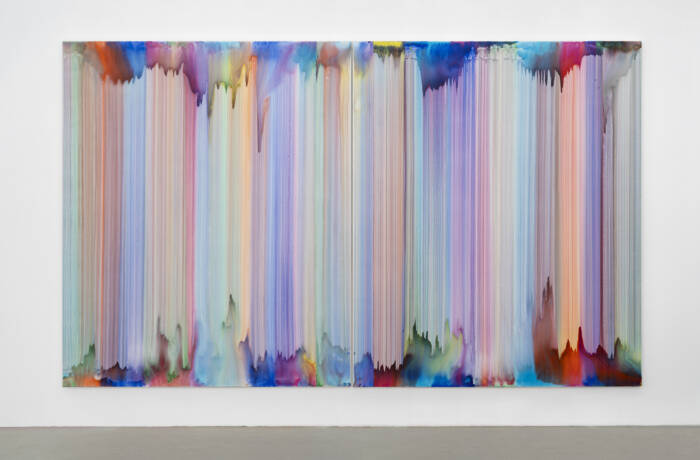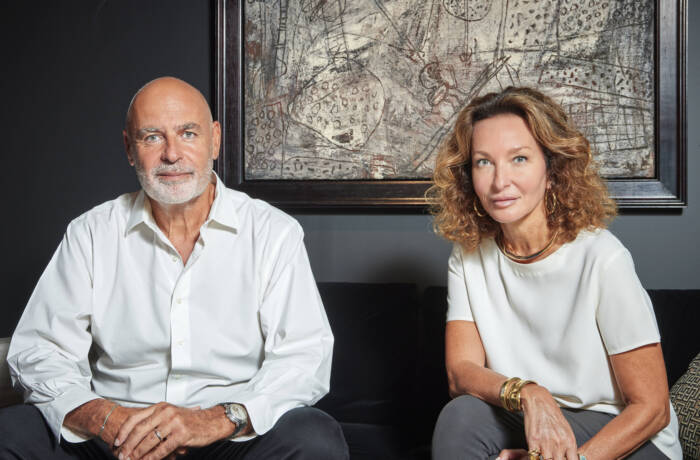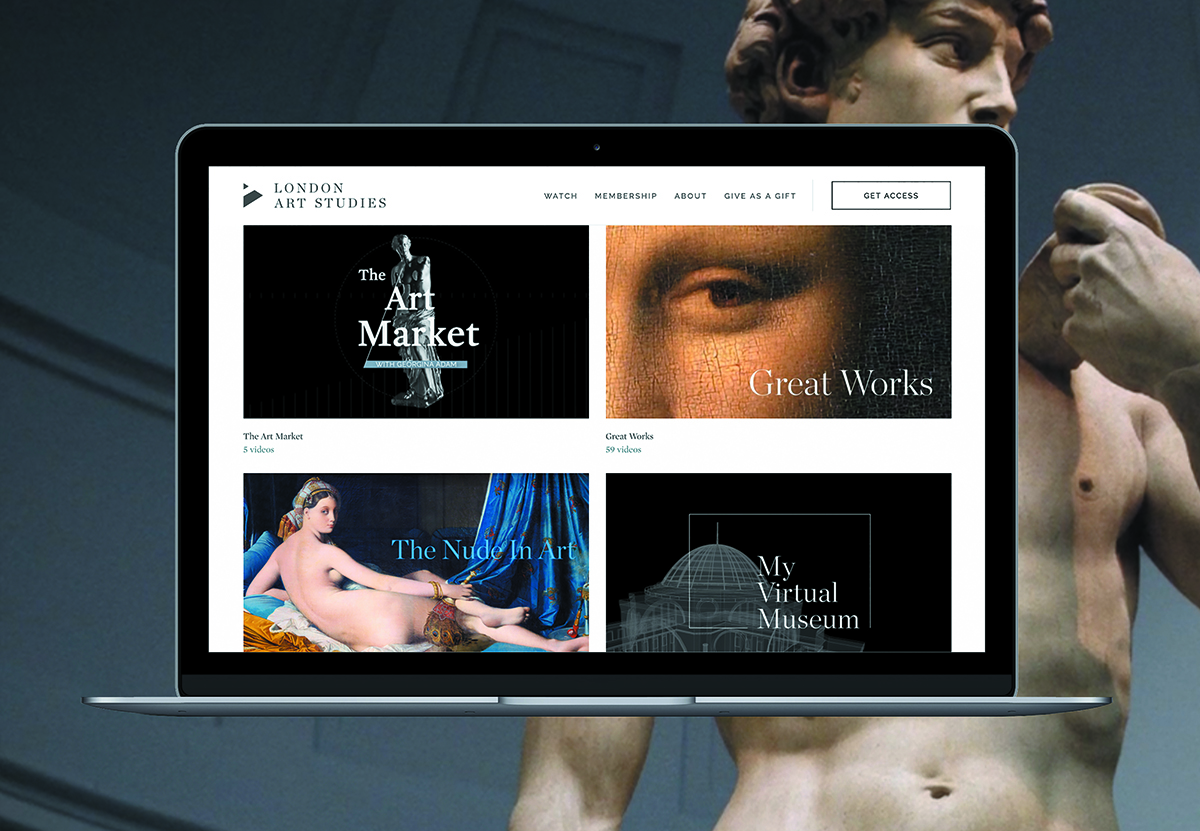
London Art Studies offers mini art online art history classes for members
London Art Studies is the world’s first online arts education subscription website, offering mini video lectures and courses on artworks, artists and movements. Ahead of the site’s launch of a new section dedicated to children and teenagers, we speak to the founder Kate Gordon about creating effective short-form content and the future of the art world.
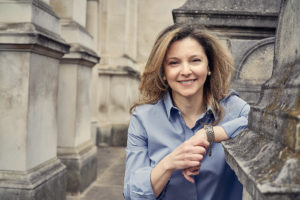
Kate Gordon. Photo by Ki Price
1. How did you progress from your early role in production to launching an educational art platform?
I took a very roundabout journey into television, starting at Sotheby’s, moving to Carlton Television where I worked on a variety of shows, and then ended up making art programmes for CNN. When the CNN show was cancelled, I was offered a job back at Sotheby’s as Head of Public Programmes for their educational arm. I found I loved combining brilliant teaching with a more popular approach; it was the early days of what now might be called “edu-tainment” and I set up London Art Studies in 2012. A couple of years after that, a friend mentioned that people around the world would want to see our classes and that was the lightbulb moment. It took 2 years to film the beginning of our content library, and we finally went online with our own educational platform in 2018. I didn’t realise until after we launched that I was carrying on a family tradition: my grandmother was a theatre producer, my father a TV producer, and I now produce short-form content for the internet.
Follow LUX on Instagram: luxthemagazine
2. Most of the online videos are under five minutes long with many focusing on one specific artwork – why did you decide on this format?
Despite having more technology around us than ever, we’re all that much busier, aren’t we? It’s fairly easy to watch a 3 or 5 minute film, and learn something which stays with you. I also felt that going back to basics for some of the films made sense: everyone knows that the Mona Lisa is the world’s most famous painting, but does anyone really know why? Our short films aim to answer these questions, whether you’re about to visit an art gallery, standing in front of a particular artwork, or simply curious to learn more. We currently offer 12 different series: whether you’re now “virtually travelling” and want to find out what to see in a particular European city, or what really what made Picasso so brilliant, there’s a series to discover. We wanted also to explore the links between art and jewellery, and were lucky to launch our latest series with master jewellers Christian Hemmerle and James de Givenchy.
3. What drives LAS’ content programme?
Our subscribers are terrific, and often suggest series ideas, but it’s often simply a phrase (such as Dangerous Women) or a book concept. One of our most popular series “The Art Market” came about through Georgina Adam’s best-selling book. It’s something the team usually wants to learn more about, or indeed, to teach. There’s a lot of content out there, and we have to make sure that our films are not only relevant but useful. We received our first award only 5 months after launch, for excellence in education, and our most recent award – the Webby – is the digital equivalent of an Oscar. Our approach is often light-hearted, such as our 30 second Instagram post on how to pronounce van Gogh (for example) but the content is serious.
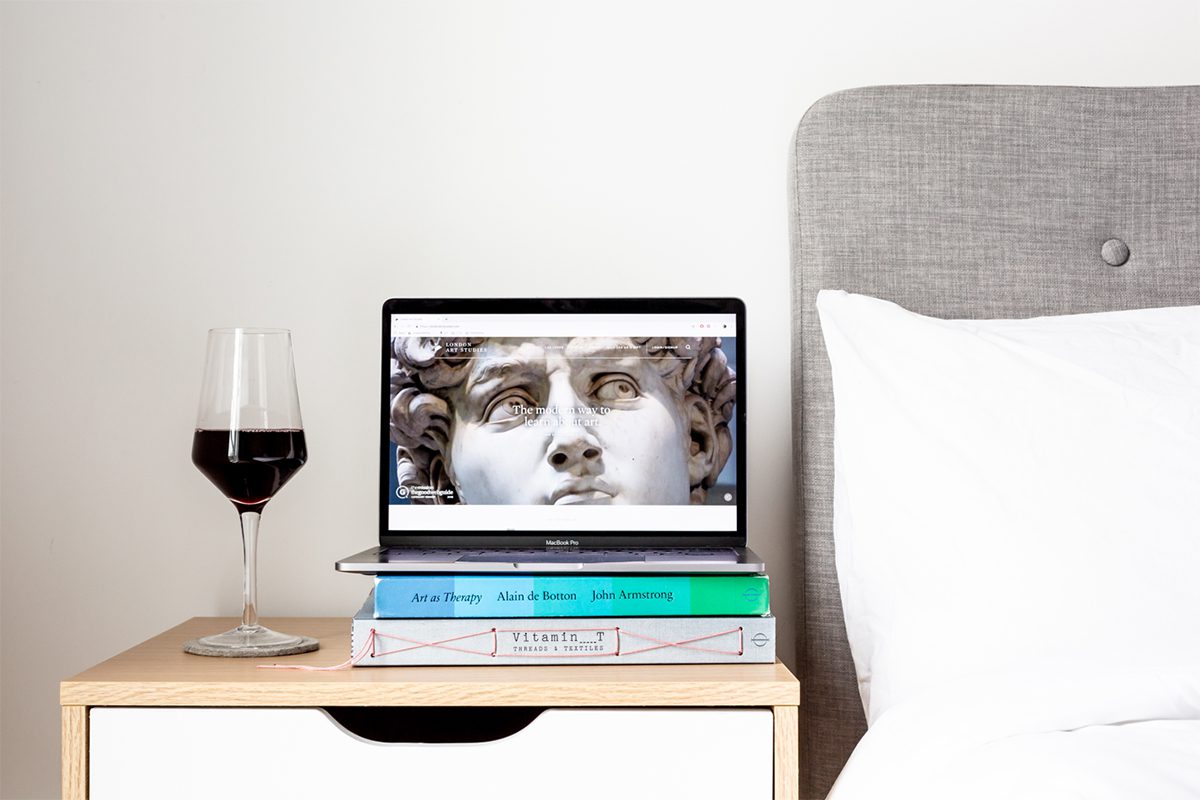
4. Can you tell us about the concept of The Academy and your decision to launch this summer?
We had always planned to launch a site for children/young people, but the lockdown speeded up our plans to do so. We had so many parents email us, saying they were watching the videos with their children, that we realised we had to bring forward our plans to help with home schooling. We’re aiming at ages 7-17, and have been fortunate in finding a new group of teenage presenters, whose enthusiasm for art is easy to see onscreen; I’m learning more from our teenage presenters than I ever thought possible. We’re also aligning content with the A level syllabus, in the hope of exams in 2021. It will also be a useful resource for those off to university to study art history, who haven’t actually taken the A level. People now consume on average 70 minutes a day of filmed content online; it should – and can be – both educational and enjoyable.
Read more: ionic cars are transforming classic cars for an electric future
5. How do you think the global lockdown will impact the future structures of the art world?
I think there’ll be great changes structurally for the time being; we’ll no longer be able to simply wander into a gallery without an appointment, or join a crush to see the latest blockbuster. I think museums and institutions are already moving to a hybrid model, with a larger global audience online. I think institutions will engage with local communities that much more, now that tourism numbers will probably decrease. I hope, and suspect, there’ll be more collaboration within the sector as a whole, and perhaps a slightly more agile approach when considering potential new pathways. Lastly, I believe the art world will make a conscious decision to reflect more of our diverse society and encourage the talents of those who have been traditionally overlooked.
6. Which period of art do you find most interesting and why?
I’m the eternal student, and it’s a great bonus for me that I can continue to learn as I work. I tend to think in terms of themes (the nude, the Baroque etc.) and we’re now editing a series called “Best of British” which explores everything from satire to seduction in British art. I find understanding contemporary art the hardest field for me, but am comforted by the fact that all art was contemporary, once, and that people have struggled for centuries with it. If pushed, I particularly enjoy seeing the links between art of the past and today; it’s how our series “Reflections: Then & Now” came about. We link works by Kerry James Marshall with Manet, and Cindy Sherman’s creations to Caravaggio. I enjoy referencing the past, alongside the art made today.
Find out more: londonartstudies.com


